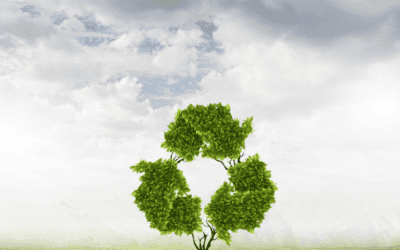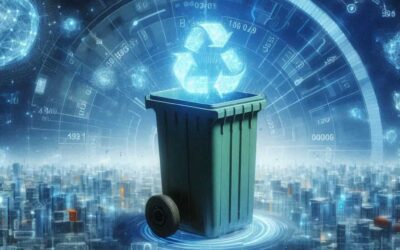We all wish for a world without landfills. And in the past few years, we’ve all made a big effort to reduce the amount of waste that ends up there. In the UK in 2010, for example, we sent 12.9 million tonnes of municipal waste to landfill. By 2020, that had fallen to 6.1 million.
That’s good news, but not every country is reducing its landfill impact – in countries where there is large population growth, economic development and ignorance of environmental issues, for example, landfill sites are growing, not shrinking.
Depending on the way landfills are managed, this forgotten waste leaks hazardous substances into the atmosphere and into waterways. They emit a significant amount of methane, take up a lot of land space and pose a danger to the health of those living and working near them.
So we are still creating landfill problems. But in our view, the landfill issue is not just about how much new waste gets sent to landfill; it’s about what’s already there, and whether we can use it – and that’s why we’re talking about landfill mining.
What is landfill mining?
Landfill mining is the process of extracting materials from landfill that can be reused, recycled, refined and resold. This puts more ‘existing’ material back into the economy, creates valuable secondary markets and reduces the amount of waste lying dormant at landfill sites.
At its most basic, landfill mining is about sifting through existing waste to extract useful and potentially valuable materials, including:
- Glass
- Various metals
- Plastics
- Textiles
- Brick, stone and cement
There will be other materials in landfill that could be successfully mined, refined and resold. The challenge for waste management companies who are considering this as a potential revenue stream is to mine safely, efficiently and profitably.
Landfill mining as part of the circular economy
If we are to work with the planet rather than against it, we need to commit to a circular economy. This is where, instead of mining or creating ‘virgin’ materials that are completely new, we use recycled or pre-used materials instead.
The earth has finite resources and so at some point, we will run out. Population growth and continued demand for consumer products means that, however aware we are of the dangers of climate change, we are still contributing to the problem
So it’s up to designers, manufacturers, consumers and waste managers to look for ways to reduce our individual – and our corporate – carbon footprints. We are already getting better at recycling, managing food waste and shopping more thoughtfully. And landfill mining could help us to extract key materials – moving them from being part of the problem to being part of the solution.
A thought-provoking idea from Aidan McCarthy worth considering would be a rebate incentive for material recovered. In theory, for each ton recycled/recovered via Energy From Waste – the operator could then reclaim from the government, the current rate for landfill tax. Incentives like these may be what is needed to drive Landfill mining towards a viable Circular Economy solution.
Safe landfill mining
Of course, landfill mining comes with its own challenges. Many landfill sites are built and equipped with environmental protection in mind, but others have no such protections and so become potential danger points, with waste leaking into water supplies, greenhouse gases leaking into the atmosphere and potentially soil damage that could affect those working and living in their vicinity.
According to a paper published in early 2023 by researchers from The Malaviya National Institute of Technology Jaipur, in India, the extraction technologies used have a significant impact on the success of landfill mining. In most cases, traditional equipment is used, such as excavators and, for deeper areas, drilling.
The waste removed then needs to be screened and separated, and then transported to other sites for cleaning, processing and resale.
The authors note that any landfill mining must be carried out to minimise effects on environmental and public health. Disturbing the waste can result in hazardous liquids or gases leaking out far faster than they might do otherwise. And there is a risk of fire, explosion and emissions if mining isn’t carried out properly.
Sustainable landfill mining
And yet, we are going to need to return to our landfills and take out these valuable materials – which are not even rotting: plastic bottles can take up to 450 years to break down. So, over the next 10-20 years, we expect to see a significant increase in businesses – including those already operating in the waste and recycling management industry – setting up safe, approved mining operations that not only help to make the circular economy work but also producing another profitable income stream in the process.
Landfill mining gives us the opportunity to create new jobs, reuse more materials, reduce landfill impact and work towards a more sustainable world. It’s already happening around the world, and it’s only going to become more commonplace as we start to look for ways to replace those finite resources.
To find out more, contact our team today or visit our showcase below.






